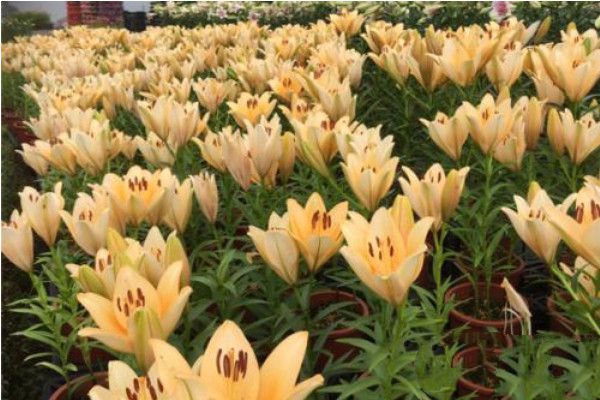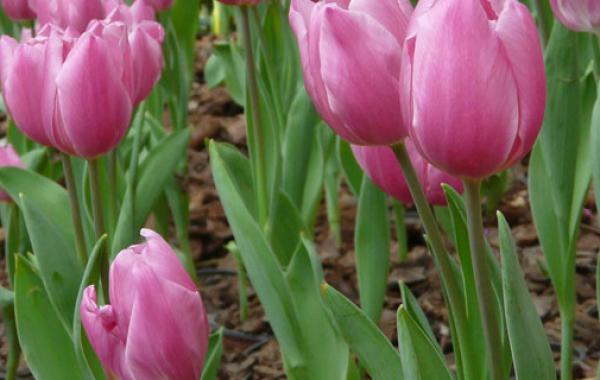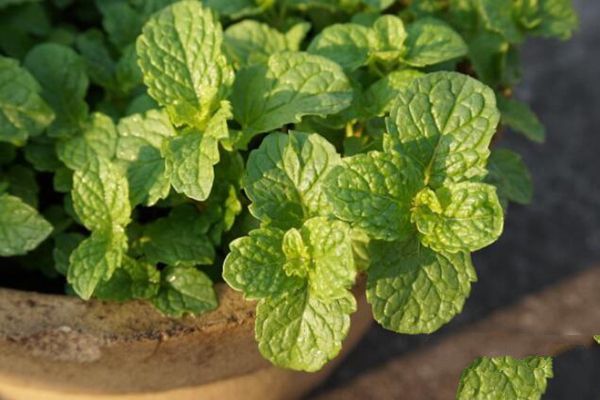Maintenance and Management techniques of potted Flowers in four Seasons in North China

How should potted flowers in the north be managed in winter? Today, the editor will analyze the management techniques of potted flowers in northern China from four different seasons.
1 maintenance of potted flowers in spring
1.1 be timely when you leave the room.
Early spring weather is warm and cold, the climate is changeable, spring potted flowers should be a little late and not too early, should be slow rather than urgent. Specifically, plum blossom and rose with strong cold resistance can leave the room when the average temperature of day and night reaches 15 ℃; jasmine, Milan, leaf flower, cactus, crab claw orchid with weak cold resistance should leave the room when the outdoor temperature reaches 18 ℃. In order not to affect the normal growth and development of potted flowers, it is best to make them go through a process of adapting to the outdoor environment before going out of the room, and then go out for maintenance throughout the day to avoid damage.
1.2 appropriate amount of fertilizer and water
Potted flowers live indoors for a long time in winter, their growth weakens, and the newly germinated buds, young leaves and young roots are delicate. If thick fertilizer or raw fertilizer is applied at this time, it is extremely vulnerable to fertilizer damage, "burning" buds and shoots. Therefore, fertilizing potted flowers in early spring should grasp the principle of "applying less fertilizer and increasing it gradually". At the same time, do not apply raw fertilizer, but should apply fully mature thin pancake fertilizer and water. It is usually applied every 10 to 15 days, which is easy to be carried out in the evening on sunny days.
Watering potted flowers in early spring should be moderate, not too much. At this time, the temperature is not high, the water evaporation is less, if the watering is too much, the basin soil is moist for a long time, it will lead to lack of oxygen in the soil, causing rotten roots, fallen leaves, and even the death of the whole plant. With the gradual increase of temperature, the amount of water gradually increased, but it should not be excessive. Throughout spring watering master the principle of "no dry, no watering, watering must be thoroughly", and remember the stagnant water in the basin. The watering time in spring should be before noon. After each fertilization and watering, the soil should be loosened in time to make the basin soil well ventilated. Spring climate is dry and windy, should pay attention to often spray water on the branches and leaves, increase air humidity, in order to facilitate the growth of potted flowers.
Summer maintenance of 2 pots of flowers
2.1 appropriate amount of light
Like the flowers with plenty of light, to the hot summer season, it is best to move to a slightly shaded place to prevent strong light exposure, the growth is better. Generally negative or shade-loving flowers should be maintained in an environment with good ventilation and shade of 50% to 85% in summer. If you are exposed to a strong light at this time, it will cause the branches and leaves to wither and yellow, and even die. To this kind of flower, move to north or east balcony or window after summer, reduce light intensity, in favor of healthy growth.
2.2 cooling and humidification
The optimum temperature for the growth of most flowers is 20-30 ℃. The highest temperature in summer in most areas of China should reach more than 30 ℃. When the temperature exceeds the maximum limit of flower growth, the normal life activities of flowers will be blocked, resulting in short plants, partial burns of leaves, reduction of flower quantity and shortening of flowering period. Many flowers bloom little or no in summer. Attention must be paid to cooling in summer. At the same time, increasing humidity is another important measure to raise potted flowers in summer.
3 maintenance of potted flowers in autumn
3.1 proper water and fertilizer
The management of water and fertilizer after autumn needs to be treated differently according to the different ecological habits of all kinds of flowers. For camellia and rhododendron which bloom once a year, liquid fertilizer mainly based on phosphate fertilizer should be applied 2 or 3 times in time, otherwise the flowers are small and few, and the rose and Milan that bloom many times a year should continue to provide sufficient water and fertilizer to promote them to blossom continuously. For most flowers, the north is generally no longer fertilized after Cold Dew's festival, in order to survive the winter safely. With the decrease of air temperature, except for the flowers blooming in autumn, winter or early spring and grass flowers sown in autumn, which can continue to be watered normally according to the actual needs of each kind of flowers, the watering times and amount of water for other flowers should be gradually reduced to avoid excessive water and fertilizer, affecting flower bud differentiation and suffering frost injury.
3.2 pay attention to pruning and shaping
When the temperature is about 20 ℃ after autumn, most flowers are easy to sprout shoots. Except for retaining some branches according to needs, the rest should be cut off in time to reduce nutrient consumption. It is also necessary to pick the heart in time for the retained twigs.
3.3 pick seeds in time
The seeds of many flowers mature before and after mid-autumn and need to be harvested in time. A bunch of red, morning glory and other seeds are harvested and dried in the sun and put into a cloth bag and stored in a low-temperature ventilated place.
4 maintenance of potted flowers in winter
4.1 enhance the lighting
In winter, the sunshine time is short, the sunshine intensity is low, and the indoor lighting condition is worse than that outside. The flowers that enter the house after late autumn can be placed in different positions indoors according to their ecological habits. Usually, flowers that like strong light and high temperature and bloom in winter and spring are placed on and near the south windowsill where there is plenty of sunshine; flowers that like light but are able to withstand low temperatures or have been dormant can be placed in places with bright scattered light; other flowers that are capable of lower temperature and have fallen leaves or are not strict with light can be placed in darker and cooler places.
4.2 Control of water and fertilizer
Except for the species of flowering in autumn, winter and early spring and most foliage plants, which can continue to be properly watered and fertilized according to the habits of flowers, the supply of water and fertilizer should be strictly controlled in general potted flowers. Reduce the amount of fertilizer applied to potted flowers in winter and stop fertilizing dormant or semi-dormant flowers, otherwise it is easy to rot roots or even die the whole plant. In particular, the pot flowers with low room temperature and no heating equipment in winter can reduce the watering times and the amount of water, so as to keep the basin soil dry so as to avoid rotting roots or freezing damage. Winter watering should be around noon, avoid watering in the evening, lest the basin soil is too wet, cold at night and make the root suffer.
That's all for today. Florists in the north can come and learn more.
Related
- What if the leaves of potted flowers turn yellow?
- Florescence Control of several Flowers
- Anti-freezing technology and post-freezing nursing technology of flowers
- What is the classification of flowers? What are the common methods of flower classification?
- Prevention and control of alkali and acid damage of flowers in courtyard
- Technology of Anti-freezing and restoring growth of Flower seedlings in greenhouse and greenhouse
- How does flower fertilization not hurt the root? Fertilization technology of flowers
- Key points of disinfection in flower greenhouse
- Several pesticides that are banned or used cautiously in flowers
- How to fertilize the flowers that watch the leaves?



